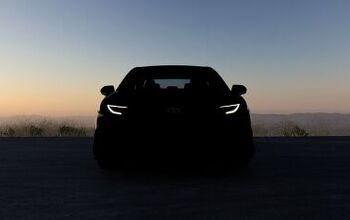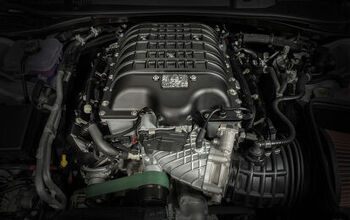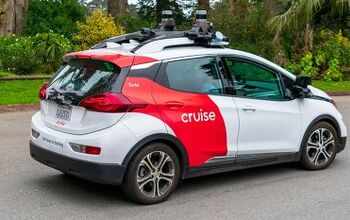Mazda CEO Explains Strategy While Simultaneously Breaking the Hearts of Rotary Fanboys Everywhere

Mazda has big aspirations for the future. However, its immediate plans don’t appear to include a successor to the RX-8, despite Mazda’s continued development on its trademark rotary engine and other conflicting information.
Instead, CEO Masamichi Kogai says the company is going to focus on its push upmarket while diversifying powertrains and cementing itself as the sporting choice over its rivals.
Speaking to Automotive News with the help of an interpreter, Mr. Kogai explained his vision of Mazda’s more upscale future.
“We want to distinguish ourselves by being a little elevated above the other Japanese or mainstream brands,” he said.
“If the car itself is not attractive, we can’t command a higher price. So, for the Mazda 3, the Mazda 6 and the CX-3, they will all have major updates. And the CX-5 is undergoing a full model change. In that way, we keep improving the models all the time. Instead of just creating a buzz to come see a new design, we enhance the vehicle’s potential in performance and technology. That is something new we are implementing.”
Part of that implementation pertains to the company’s next generation of Skyactiv drivetrains, which include a diesel option on next year’s CX-5.
While the diesel version of the crossover will be coming to the United States, Kogai suspects most diesel sales will continue taking place in Japan.
“In the U.S., diesel is not necessarily the cheaper option. It’s about 8 percent more expensive than gasoline. But compared with high-octane gasoline, diesel is cheaper. We still have to pinpoint where people can find the advantage in buying diesel,” he explained.
Inevitably, Mazda’s partnership with Toyota will produce an electric powertrain too. The company thinks the safest play is to keep EV production at a low-volume and not abandon combustion engines too quickly. Mazda’s Head of Research and Development Kiyoshi Fujiwara asserts that by 2020, “five to ten percent of the market will be pure EV, while the rest will still use ICE. Therefore ICE is [currently] the most important technology in the world.”
Kogai’s take seems to be that electrification is inevitable and important for Mazda, especially in the form of its own unique hybrid. The company has long been hinting that the rotary engine might make a return — if not in the hypothetical RX-9, as a range extender for some type of EV.
“We ended production of the RX-8 with the rotary engine,” Kogai stated. “But if we were to restart production of the rotary engine again, we need to make sure it wouldn’t be just short-lived. We need it to meet future emissions regulations. We are still conducting our R&D activity to overcome any issues we have with emissions and fuel efficiency.”
When asked if the rotary would see the light of day as a supplemental power source for an EV or as a primary drivetrain first, he said that the zero-emissions vehicle mandate made electrification the clear priority. Kogai didn’t even suggest the rotary as a practical stand-alone option, not even in a possible RX car.
“I think that as a sports car option, the MX-5 1.5-liter or 2.0-liter conventional engine, with its power and acceleration, might be a more exhilarating experience.”
Putting the the final nail into the RX-9’s coffin was his single word response to if there were any plans to introduce a sports car larger than the MX-5.
“No.”
[Image: Mazda]

A staunch consumer advocate tracking industry trends and regulation. Before joining TTAC, Matt spent a decade working for marketing and research firms based in NYC. Clients included several of the world’s largest automakers, global tire brands, and aftermarket part suppliers. Dissatisfied with the corporate world and resentful of having to wear suits everyday, he pivoted to writing about cars. Since then, that man has become an ardent supporter of the right-to-repair movement, been interviewed on the auto industry by national radio broadcasts, driven more rental cars than anyone ever should, participated in amateur rallying events, and received the requisite minimum training as sanctioned by the SCCA. Handy with a wrench, Matt grew up surrounded by Detroit auto workers and managed to get a pizza delivery job before he was legally eligible. He later found himself driving box trucks through Manhattan, guaranteeing future sympathy for actual truckers. He continues to conduct research pertaining to the automotive sector as an independent contractor and has since moved back to his native Michigan, closer to where the cars are born. A contrarian, Matt claims to prefer understeer — stating that front and all-wheel drive vehicles cater best to his driving style.
More by Matt Posky
Latest Car Reviews
Read moreLatest Product Reviews
Read moreRecent Comments
- Jeff JMII--If I did not get my Maverick my next choice was a Santa Cruz. They are different but then they are both compact pickups the only real compact pickups on the market. I am glad to hear that the Santa Cruz will have knobs and buttons on it for 2025 it would be good if they offered a hybrid as well. When I looked at both trucks it was less about brand loyalty and more about price, size, and features. I have owned 2 gm made trucks in the past and liked both but gm does not make a true compact truck and neither does Ram, Toyota, or Nissan. The Maverick was the only Ford product that I wanted. If I wanted a larger truck I would have kept either my 99 S-10 extended cab with a 2.2 I-4 5 speed or my 08 Isuzu I-370 4 x 4 with the 3.7 I-5, tow package, heated leather seats, and other niceties and it road like a luxury vehicle. I believe the demand is there for other manufacturers to make compact pickups. The proposed hybrid Toyota Stout would be a great truck. Subaru has experience making small trucks and they could make a very competitive compact truck and Subaru has a great all wheel drive system. Chevy has a great compact pickup offered in South America called the Montana which gm could be made in North America and offered in the US and Canada. Ram has a great little compact truck offered in South America as well.
- Groza George I don’t care about GM’s anything. They have not had anything of interest or of reasonable quality in a generation and now solely stay on business to provide UAW retirement while they slowly move production to Mexico.
- Arthur Dailey We have a lease coming due in October and no intention of buying the vehicle when the lease is up.Trying to decide on a replacement vehicle our preferences are the Maverick, Subaru Forester and Mazda CX-5 or CX-30.Unfortunately both the Maverick and Subaru are thin on the ground. Would prefer a Maverick with the hybrid, but the wife has 2 'must haves' those being heated seats and blind spot monitoring. That requires a factory order on the Maverick bringing Canadian price in the mid $40k range, and a delivery time of TBD. For the Subaru it looks like we would have to go up 2 trim levels to get those and that also puts it into the mid $40k range.Therefore are contemplating take another 2 or 3 year lease. Hoping that vehicle supply and prices stabilize and purchasing a hybrid or electric when that lease expires. By then we will both be retired, so that vehicle could be a 'forever car'. And an increased 'carbon tax' just kicked in this week in most of Canada. Prices are currently $1.72 per litre. Which according to my rough calculations is approximately $5.00 per gallon in US currency.Any recommendations would be welcomed.
- Eric Wait! They're moving? Mexico??!!
- GrumpyOldMan All modern road vehicles have tachometers in RPM X 1000. I've often wondered if that is a nanny-state regulation to prevent drivers from confusing it with the speedometer. If so, the Ford retro gauges would appear to be illegal.


































Comments
Join the conversation
Thats your wagon: http://www.motortrend.com/news/next-buick-regal-previewed-by-uncamouflaged-opel-insignia-sedan-wagon/?wc_mid=4035:4461&wc_rid=4035:1790387&_wcsid=F02E80A9FE45F875126522EAB2C8C7A9524F92D3CF3980ED
So many of you are saying "Bring a wagon to North America!!!" Those cars already exist: CX-5 and CX-9 Americans love wagons, only in a lifted form factor. Selling a "true" wagon in the same showroom as the CX-5 and CX-9 may prove to be difficult. Look at VW. The ancient Tiguan is outselling the newer MQB Golf Sportwagen by more than 3 to 1 in 2016. With tighter emissions and efficiency requirements looming on the horizon, we can only hope car makers are forced into the traditional wagon form factor for it's superior Cd and lower weight.